10 Beautiful Outside Plants That Like Shade for a Lush Garden
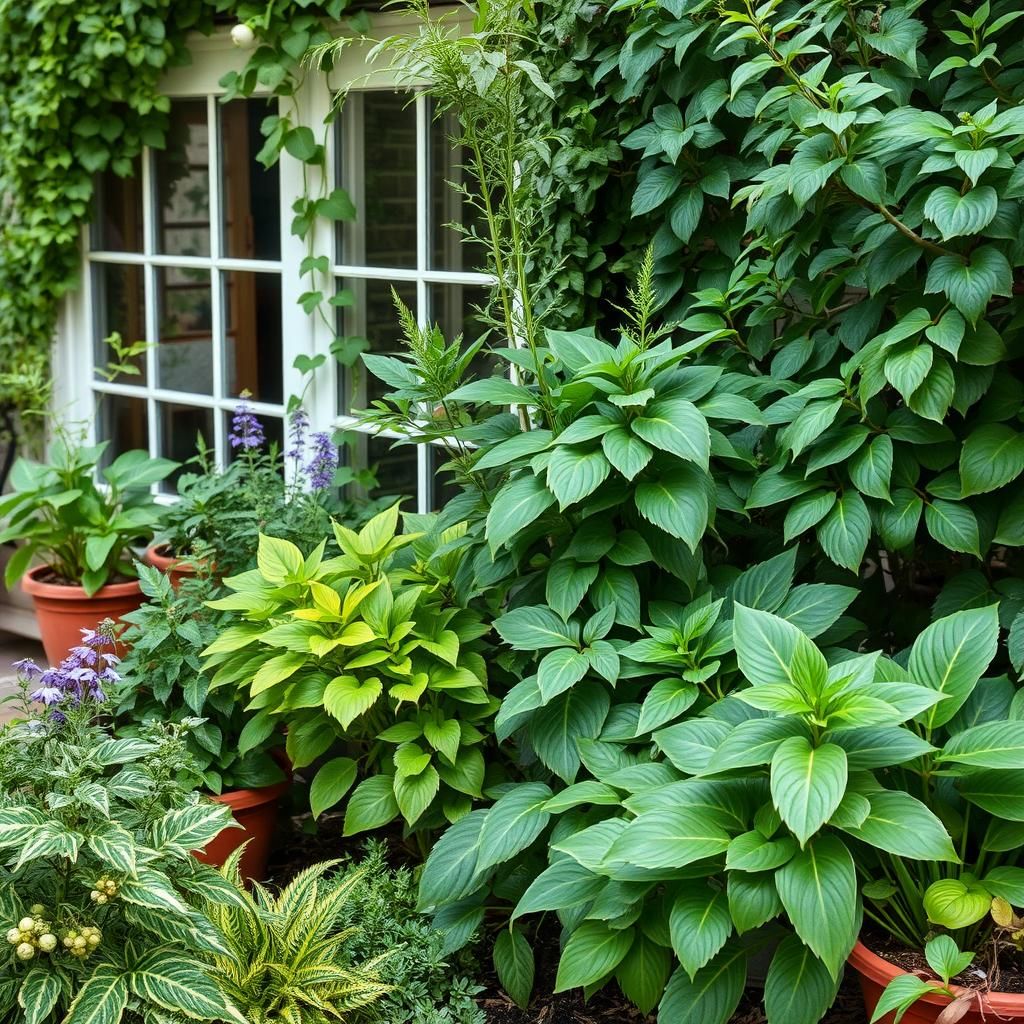
Creating a lush garden in shaded areas can be a rewarding challenge for any gardener. While many plants thrive in the sunlight, there are numerous beautiful species that prefer the cooler, shaded spots of your outdoor space. In this article, we will explore ten stunning plants that not only flourish in low light but also add vibrant colors and textures to your garden. From lush ferns to stunning flowering plants, discover how you can transform those darker corners into a vibrant paradise, ensuring your garden remains captivating all year round, regardless of sunlight exposure.
Outside Plants That Like Shade
When it comes to landscaping, choosing the right plants for shaded areas can enhance the beauty of your garden while ensuring that your plants thrive. There are various species that flourish in low-light environments, such as ferns, hostas, and heucheras, which not only tolerate shade but can also add vibrant colors and textures to your outdoor space. These plants are often utilized in gardens with tall trees or structures that block sunlight, making them perfect for creating lush, green havens. Understanding which plants prefer shade will help you design a sustainable garden that remains attractive throughout the seasons.
Characteristics of Shade-Loving Plants
Shade-loving plants typically exhibit specific characteristics that enable them to thrive in low-light conditions. Many of them have larger leaves, which help capture more light in the absence of direct sunlight. Additionally, they often require less water than sun-loving plants, as lower light levels reduce the rate of transpiration. These adaptations allow them to survive and even flourish in shaded environments, making them ideal choices for garden areas with limited exposure to the sun.
Popular Shade Plants for Outdoor Spaces
Some of the most popular shade plants include fritillaria, astilbe, and Japanese maples. Fritillaria are known for their exotic bell-shaped flowers, while astilbe produces feathery plumes in shades of pink, white, and red that add depth to the garden. Japanese maples, on the other hand, provide stunning foliage with intricate shapes, making them not only functional but also a visual focal point. Incorporating these plants into your outdoor design can create an inviting atmosphere even in shaded areas.
Caring for Shade Plants
Caring for shade plants requires understanding their specific needs, including watering, soil type, and fertilization. While these plants generally prefer moist, well-drained soil, it's essential to avoid overwatering, as poor drainage can lead to root rot. Using organic mulch can help retain moisture and suppress weeds, contributing to healthier plants. Regularly checking for pests and diseases will also ensure that your shade garden remains vibrant and lush throughout the growing season.
Design Ideas for Shaded Areas
Designing shaded areas presents unique opportunities to create beautiful outdoor environments. Layering different heights of shade plants can add depth and interest to a garden. Incorporating pathways, decorative stones, and seating areas can create engaging focal points within shaded spaces. For a pop of color, consider adding flowering shade plants around seating areas or along pathways to draw the eye and create inviting spots for relaxation.
Benefits of Growing Plants in Shade
Growing plants in shaded areas offers numerous benefits, including reduced water consumption and the ability to cultivate a diverse array of species that might not tolerate full sun. These gardens can maintain cooler temperatures, providing a refreshing retreat during hot summer months. Additionally, shade gardens can help prevent soil erosion and provide habitats for various wildlife, contributing to a balanced ecosystem in your outdoor space.
| Plant Name | Sunlight Requirement | Watering Needs |
|---|---|---|
| Ferns | Partial to full shade | Regular moisture |
| Hostas | Partial to full shade | Moderate moisture |
| Astilbe | Partial to full shade | Consistent moisture |
| Japanese Maple | Partial shade | Moderate moisture |
| Heuchera | Partial shade | Moderate moisture |
What outdoor plants thrive in the shade?
:strip_icc()/heuchera-midnight-bayou-2af3c0c3-d7f31fd6147449d384e2f35f6ee72718.jpg)
Many outdoor plants can flourish in shady environments, making them ideal choices for gardens with limited sunlight. Shade gardens often require specific types of plants that can thrive in low-light conditions. Below are some of the best outdoor plants that excel in shaded areas:
1. Ferns
Ferns are among the most popular shade-loving plants. They add a lush, tropical feel to any garden and are known for their beautiful foliage. There are various types of ferns, each adapted to different soil conditions. Some common ferns that thrive in the shade include:
- Boston Fern (Nephrolepis exaltata)
- Lady Fern (Athyrium filix-femina)
- Japanese Painted Fern (Athyrium niponicum)
2. Hostas
Hostas are a staple in many shade gardens due to their diverse shapes and sizes. They have large, attractive leaves that can bring vibrant color to dark areas. Hostas not only thrive in shade but also adapt well to different soil types, making them very versatile. Key characteristics include:
- Variegated Leaves - Many hostas come with white or yellow edges.
- Flowers - Some varieties produce tall flower spikes in summer.
- Hardiness - They can survive in various climates, from USDA zones 3 to 9.
3. Astilbes
Astilbes are known for their stunning plume-like flowers that bloom in summer. These plants thrive in moist, shady conditions and are perfect for adding pops of color to shaded gardens. They can grow well alongside other shade-loving plants and complement their greenery beautifully. Notable features include:
- Color Variety - Available in shades of red, pink, white, and purple.
- Height Range - Varieties can range from 1 to 4 feet tall.
- Attracts Pollinators - They are excellent for drawing in bees and butterflies.
4. Bleeding Heart
The Bleeding Heart (Dicentra spectabilis) is a unique perennial that features distinctive heart-shaped flowers. It thrives in shaded areas, particularly in early spring. This plant not only provides visual interest with its delicate blooms but also has a pleasing fragrance. Important aspects include:
See also: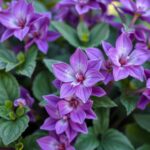
- Flowering Season - Blooms in late spring to early summer.
- Height - Typically grows 2 to 3 feet tall.
- Preferred Conditions - Prefers moist, well-drained soil in shaded areas.
5. Japanese Spurge
Japanese Spurge (Pachysandra terminalis) is a low-growing, evergreen ground cover that performs well in full shade. It's an excellent choice for filling in bare areas and is known for its resilience. This plant is particularly useful for limiting weed growth in shaded parts of the garden. Key qualities include:
- Evergreen Foliage - Provides year-round greenery.
- Low Maintenance - Requires little care once established.
- Slow Growth - It spreads gradually, making it a great option for controlled gardens.
Which plant grows best in shade?
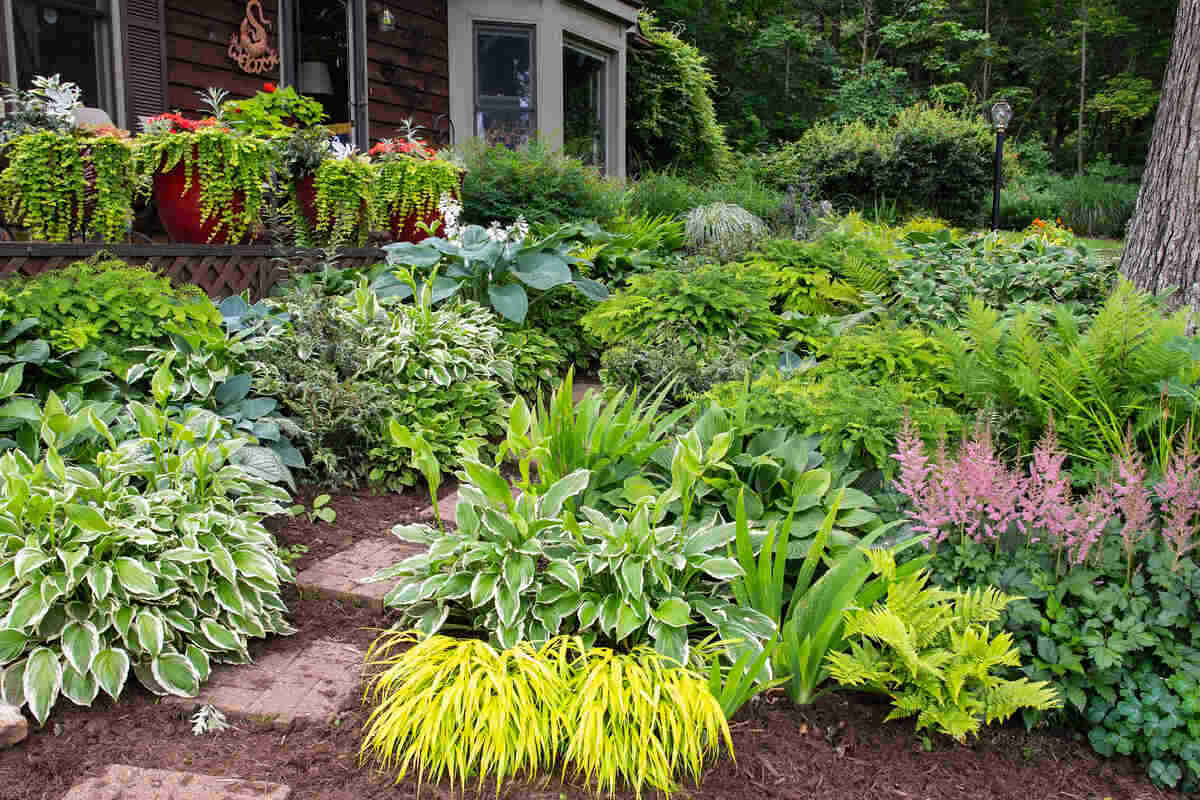
The plants that thrive best in shade are typically those adapted to lower light conditions. Shade-tolerant plants have developed characteristics that allow them to capture sunlight more efficiently in environments where it is scarce. Below, we will explore several remarkable options for shady areas, including their characteristics, benefits, and ideal growing situations.
1. Hostas
Hostas are among the most popular shade-loving plants, known for their attractive foliage. They come in various sizes, shapes, and colors, making them perfect for decorative landscaping.
- Variety of Colors: Hostas can be green, blue, or variegated with white or yellow edges.
- Low Maintenance: Once established, they require minimal care, making them excellent for novice gardeners.
- Attracts Wildlife: Hostas provide habitat and food for beneficial creatures like frogs and butterflies.
2. Ferns
Ferns are ancient plants that thrive in shaded and humid conditions, making them ideal for forest-like settings in gardens. They come in various types, each with unique textures and forms.
- Air Purifiers: Ferns can help improve indoor air quality by filtering toxins.
- Diverse Forms: From the broad fronds of the ostrich fern to the delicate leaves of maidenhair ferns, there is a fern for every taste.
- Moisture Lovers: They thrive in moist, shaded locations, making them perfect for areas near water features.
3. Astilbe
Astilbe, commonly known as false spirea, is renowned for its stunning plume-like flowers that bring vibrant color to shady corners of gardens.
- Colorful Blooms: Astilbe flowers range from white to various shades of pink and red.
- Long Blooming Period: They typically flower from late spring to early summer, providing long-lasting color.
- Soil Preference: These plants prefer consistently moist, well-drained soil, making them ideal for shaded locations with some moisture.
4. Bleeding Heart
The bleeding heart plant, known for its unique heart-shaped flowers, thrives in shaded spots and adds a touch of whimsy to any garden.
- Symbolic Blooms: The flowers resemble hearts and symbolize deep emotional connections.
- Seasonal Interest: They bloom in spring and may enter dormancy in summer, allowing room for other plants.
- Particular Preferences: Bleeding hearts prefer rich, organic soil and consistent moisture, thriving in light to full shade.
5. Impatiens
Impatiens are popular annual flowers known for their brilliant colors and ability to brighten shady areas. They are perfect for enhancing flower beds and borders.
- Bountiful Colors: Available in vibrant shades like red, pink, purple, and white, catering to diverse garden palettes.
- Fast Growth: Impatiens establish quickly, filling in gaps in garden beds with lush foliage and blooms.
- Versatile Uses: They can be planted in the ground, containers, or hanging baskets, making them adaptable for various landscaping styles.
What outdoor plants thrive in low light?
:strip_icc()/heuchera-midnight-bayou-2af3c0c3-d7f31fd6147449d384e2f35f6ee72718.jpg)
Low light environments can be tricky for gardeners, but several outdoor plants thrive under such conditions. These plants are excellent choices for shaded areas, often due to their natural habitats which allow them to flourish without direct sunlight. Here are some plants that are particularly suitable for low light situations:
1. Ferns: Many fern species prefer shady conditions and can add a lush, green touch to your landscape.
2. Hostas: These shade-loving perennials are known for their beautiful foliage and can brighten up any low light area.
3. Astilbe: The feathery flowers of astilbe can bring vibrant color to shaded areas in gardens.
Ferns: Natural Elegance in Low Light
Ferns are among the most adaptive outdoor plants for low-light environments. They thrive in moist, shaded areas, making them perfect for gardens or landscapes that do not receive much sunlight. Species such as the Boston fern and staghorn fern do exceptionally well in these conditions. Their delicate fronds can add an elegant touch to any garden.
- Boston Fern: Known for its lush, arching fronds.
- Staghorn Fern: Unique for its antler-like leaves, ideal for hanging display.
- Lady Fern: A hardy variety that grows well in rich, moist soil.
Hostas: Versatile and Hardy
Hostas are popular for their varied foliage and ability to thrive in shade. They can tolerate a range of soil types, which further enhances their appeal. With various species available, hostas can suit almost any garden style while providing a leafy backdrop.
See also: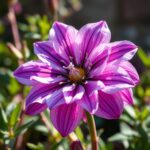
- Blue Hosta: Features stunning blue leaves that can contrast beautifully with other plants.
- Gold Hosta: Bright yellow leaves add warmth to shaded areas.
- Fragrant Hosta: Offers beautiful blooms along with fragrant leaves.
Astilbe: Colorful Blossoms in the Shade
Astilbe is renowned for its vibrant blooms, which thrive in moist, shaded conditions. They can produce a stunning display of colors, from white to deep red to pink, making them a favorite among garden enthusiasts. They are often planted near water features or in shaded flower beds.
- Red Astilbe: Bright red flowers that stand out in any garden.
- White Astilbe: Elegant and timeless, perfect for a classic garden look.
- Pink Astilbe: Softens the landscape with its delicate hue.
Japanese Forest Grass: Textured Foliage for Shade
Japanese forest grass (Hakonechloa macra) is another excellent choice for low-light areas. Not only does it thrive in shade, but it also provides beautiful textural interest with its cascading leaves. This ornamental grass is perfect for softening borders or filling in spaces beneath trees.
- Variegated Hakonechloa: Features stripes of green and gold for added vibrancy.
- Green Hakonechloa: Offers a simple yet elegant look.
- Spreading Hakonechloa: Great for ground cover while thriving in darkness.
Coral Bells: Color and Texture in Low Light
Coral bells (Heuchera) are popular for their colorful foliage and small flowers. These plants tolerate low light and add a splash of color to shaded areas. They can be used effectively in borders or as ground cover beneath taller plants.
- Caramel Coral Bells: Features striking amber foliage that appears even more vibrant in shade.
- Black Coral Bells: Dark, moody leaves that create a dramatic contrast.
- Peach Flambé: Unique combination of colors that brightens up shaded spaces.
What plants like shade and come back every year?
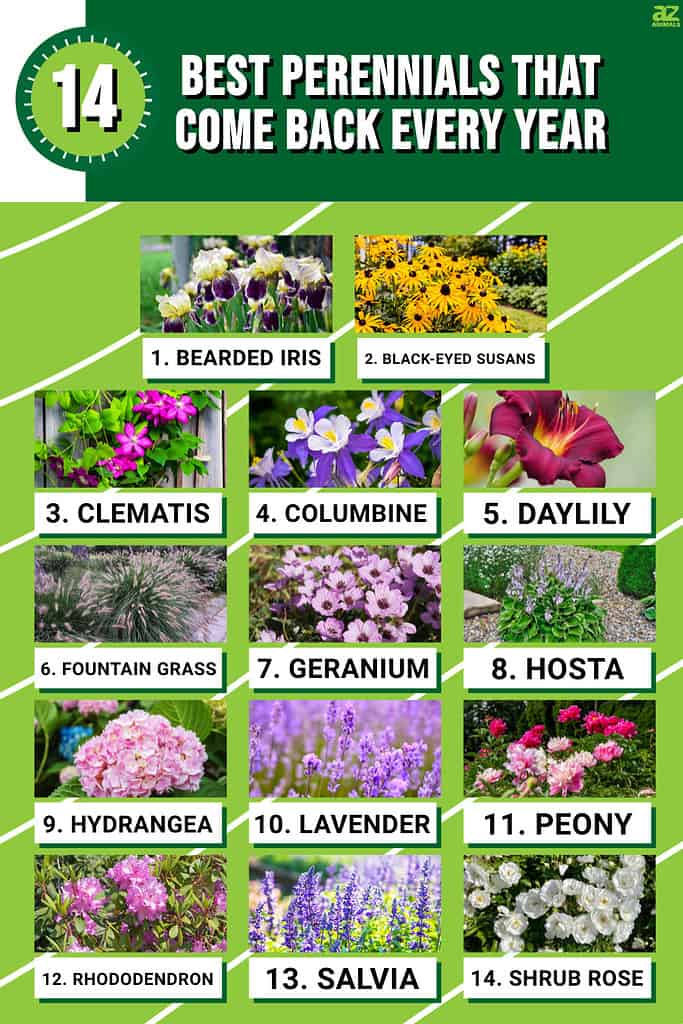
Many gardeners seek to establish beautiful landscapes in shaded areas of their gardens. Fortunately, several perennial plants thrive in low-light conditions and provide seasonal returns with minimal maintenance. These plants not only survive but can also add significant color and texture to shaded areas. Here’s a closer look at some of the best options for those shaded spots in your garden.
1. Hostas
Hostas are perhaps the most popular shade-loving plants. They come in a variety of sizes, shapes, and colors, making them highly versatile for any garden design. Their large leaves come in hues ranging from deep greens to vibrant blues and yellows.
- Low maintenance: Once planted, Hostas require minimal care.
- Diverse foliage: Can add texture and contrast in shaded areas.
- Attracts wildlife: Hostas can attract beneficial pollinators like bees and butterflies.
2. Ferns
Ferns are another excellent choice for shady spots. They have unique foliage that adds a soft and lush look to gardens. Different species thrive in various conditions, and they can create a natural, woodland feel.
- Variety of species: From maidenhair to ostrich ferns, there are many types to choose from.
- Layered growth: Can be used as ground cover or in layered garden designs.
- Adaptable: Thrive in a range of moisture conditions, from dry to wet.
3. Astilbe
Astilbe is known for its feathery plumes of flowers that bloom in various colors, such as pink, white, red, and purple. This perennial not only adds color but also has attractive foliage.
- Extended bloom time: Astilbe flowers provide color for several weeks in late spring to early summer.
- Good for borders: Their height and flower spikes make them great for borders and backdrops in shaded areas.
- Moisture-loving: Thrives in consistently moist, shaded conditions.
4. Bleeding Heart (Dicentra)
Bleeding Hearts are prized for their heart-shaped flowers that hang gracefully from arching stems. They bring a unique and romantic touch to shaded gardens.
- Early bloomers: Primarily blooms in spring, providing early-season interest.
- Easily propagated: Can spread through rhizomes, making them easy to increase in your garden.
- Lovely foliage: Their finely dissected leaves add texture even when the flowers are not present.
5. Coral Bells (Heuchera)
Coral Bells are celebrated for their colorful foliage and delicate flower spikes. They can tolerate shade and can be a fantastic addition at the front of shaded borders.
- Vibrant color: Available in a wide range of colors, from deep burgundy to bright lime green.
- Heat resistant: They can thrive in both shade and partial shade, making them quite versatile.
- Low water needs: Once established, they require less water than many other perennials.
Questions from Our Readers
What are some examples of outside plants that thrive in shade?
Many plants prefer shady environments, including ferns, hostas, astilbes, and begonias. These species are well-adapted to low light conditions and can often flourish even in areas that receive minimal sunlight throughout the day.
How much shade do these plants require?
Typically, shade-loving plants do best in partial shade to full shade, meaning they can thrive in areas that receive about 2 to 4 hours of direct sunlight or none at all. It's important to understand the light conditions in your garden to choose the right plants that will be healthy and vibrant.
Can shade plants survive in cooler climates?
Yes, many shade-loving plants are well suited for cooler climates and can even thrive in lower temperatures. For instance, mountain laurel and Japanese anemone are examples of shade plants that can withstand chilly conditions while continuing to flourish in the garden.
See also: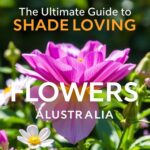
How do I care for shade plants in my garden?
Caring for shade plants involves providing adequate moisture and ensuring good drainage since the soil in shaded areas can retain more water. It's also crucial to monitor plants for pests and diseases as they might be more susceptible due to the humid environment.

If you want to read more articles like 10 Beautiful Outside Plants That Like Shade for a Lush Garden, we recommend you check out our Landscaping category.
Leave a Reply
Related Articles